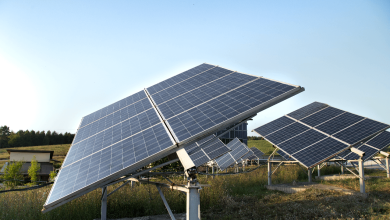How is Climate Change Hindering Maui’s Rebuilding After the Wildfires?

Following the devastating Maui wildfires in August, residents on the gorgeous Hawaiian island face a long road to recovery. Aside from the immediate rebuilding issues, the threat of climate change looms big. These fires, one of the country’s deadliest disasters, left indelible scars on Maui and sparked serious discussions about the increasing threat of climate change.
Initial reports suggested that 115 lives were tragically lost in the flames that consumed a significant portion of Lahaina. However, it came as a surprise when authorities revised this grim tally to 97, highlighting the complexity of disaster response and management.
Igniting the Debate: What Caused the Inferno?
Determining the origin of the fire has become a subject of intense debate. While experts contemplate the possibility of fallen power lines in gusty winds sparking the blaze, Maui County officials have taken legal action against Hawaiian Electric. Their lawsuit alleges “intentional and malicious” mismanagement of power lines by the utility, which they claim allowed the flames to ignite. Victims’ families have also launched lawsuits, asserting that the utility failed to secure power equipment against high winds and disregarded warnings of an impending hurricane hundreds of miles away. Hawaiian Electric acknowledged its power lines’ involvement in igniting an early-morning fire but maintained that they were not conducting electrical currents when the devastating afternoon blaze consumed Lahaina.
Exacerbating the fire’s fury were worsening drought conditions, with nearly 16 percent of Maui County facing severe drought. Curiously, none of the 80 warning sirens stationed across the island were activated, complicating the firefighting efforts. A water shortage further hampered the battle against the flames, and evacuation routes became congested.
Identifying the victims of this catastrophic event has proved to be an excruciatingly slow process. The sheer scale of destruction and Maui’s remote location complicated the arrival of out-of-state search teams, including human and canine units. Forensic examiners encountered unsettling cases of multiple sets of remains belonging to the same individual, further adding to the complexity. The dearth of DNA samples from victims’ close relatives has been a significant impediment to the already painstaking process.
Sheltering Displaced Residents
The thousands of displaced residents have found refuge in hotels and Airbnb rentals. Governor Josh Green reported that 6,000 displaced individuals sought shelter in Maui hotels, with an additional 1,100 opting for Airbnb accommodations. Rental assistance has been secured for an 18-month period, and the American Red Cross has been offering sustenance, mental health support, and financial aid. FEMA has provided approximately $19 million in assistance to aid the recovery process.
The prospect of rebuilding raises formidable concerns for residents. State and local authorities are contemplating a moratorium on selling damaged or destroyed properties to safeguard affected individuals from potential exploitation. The Hawaii Tourism Authority has approved a $2.6 million marketing plan to promote travel to Maui, while concurrently urging tourists to be considerate and avoid visiting the Lahaina area or West Maui. Governor Green’s emergency proclamation, set to take effect on October 8, discontinues guidance discouraging nonessential travel to West Maui, with the exception of Lahaina.
Also Read : What Do Climate Activists Really Want When They Protest?
The Long-term Threat: Climate Change
Beyond the immediate trials, the evolving climate remains a persistent source of worry. Hawaii has witnessed a quadrupling in the area consumed by wildfires over recent decades. Invasive grasses, which render the islands more susceptible to wildfires and climate change, have exacerbated dry and hot conditions, leading to the rapid spread of fires. The specter of climate change casts a long shadow over the state, necessitating proactive measures to mitigate future calamities.



